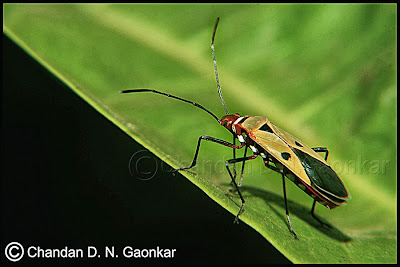Tiny Creatures and Close-Up Lenses
Mr. Chandan D. N. Gaonkar of Panaji (Goa-India) is an emerging
photo artist. He has been a contributor for our blog since its inception. This
time he is before us with his experience about clicking tiny creatures with
close-up lenses. This technique is quite simple and has been very popular among
the beginners.
--Dr. Pankaj Sharma
"Mother Nature has blessed the earth with innumerable living
beings. Small creatures have their own world. Their shapes, vibrant colors,
textures and activities are real pleasure for our eyes. It is always very
delightful to see these little beings in their own world that is far from the crowd
of human life. Whenever I shoot these creatures, my first intention is to
respect Mother Nature. I never disturb my subjects, and give them proper respect.
There are times when I have to keep waiting for them for their best moments.
But this stay also gives me a deep satisfaction.
Photographing small creatures requires a special macro lens
which is often very expensive. The close-up lenses of different powers are the
good alternative to a macro lens. These lenses permit a normal or a zoom lens
to focus at the small objects by going close to them, the same as a magnifying
glass helps us observing the small subjects closely. These lenses can be screwed
on the front of lens, and are easy to use. They are of different powers, like
+1, +2 and +4. We have to choose the power of lens according to the size of the
subject. If the subject is small, we need a high power lens (such as +4). On
the other hand, if the subject is a bit big, use of a lens of +1 or +2 power is
enough. If case, the subject is too much tiny, we can use the combination of
two or more lenses (such as +4 and +1 or +4 and +2). But the grouping of two or
more lenses can decrease the quality of picture.
Although the images with above lenses are not very much good
in quality, yet we can get satisfactory results by keeping a few points in our
mind:
* We should not use very high power of close up lens.
Likewise the combination of two or more lenses should also be avoided.
* We have to click the images in proper light.
* The use of small-size aperture helps in getting the images
with proper sharpness and depth.
* Resting the camera on a firm tripod is always recommended as
this prevents shake while close-focusing.
* Use of fill in flash is very helpful in low light condition."
--Chandan D. N. Gaonkar











